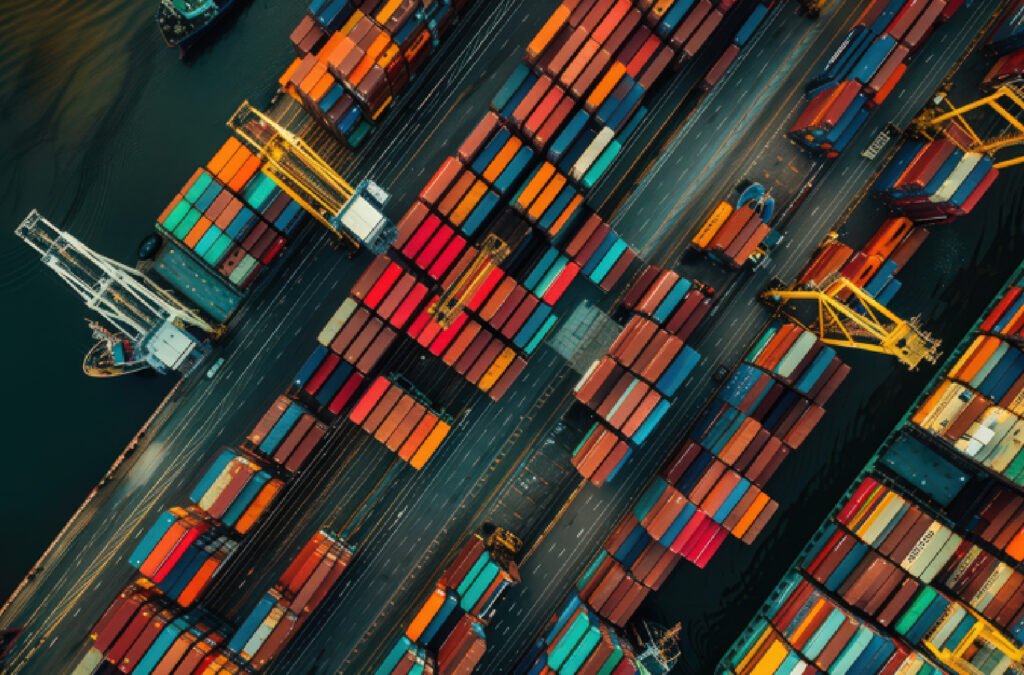Sustainable Supply Chains: Leveraging Digitalization to Reduce Carbon Footprints

In today’s environmentally-conscious world, sustainability has become a top priority for businesses across all industries. Consumers, investors, and governments alike are increasingly holding companies accountable for their environmental impact. At the heart of many organizations' carbon footprint lies the supply chain—a complex web of production, transportation, and distribution processes that often result in significant emissions. However, digitalization is providing new tools and technologies to transform supply chains and significantly reduce carbon footprints. This blog explores how businesses are leveraging digital solutions to create sustainable supply chains, improving efficiency while reducing their environmental impact.
1. Optimizing Transportation with AI and IoT
Transportation is one of the largest contributors to supply chain emissions, accounting for a significant portion of a company’s carbon footprint. This includes everything from long-haul shipping to last-mile delivery. However, digital technologies like artificial intelligence (AI) and the Internet of Things (IoT) are helping companies reduce their carbon emissions through smarter logistics.
For example, AI-powered route optimization algorithms analyze real-time traffic data, weather conditions, and fuel consumption to determine the most efficient delivery routes.
This reduces unnecessary mileage, fuel consumption, and greenhouse gas (GHG) emissions. Companies like Amazon are already implementing AI-driven logistics to minimize fuel use while delivering products faster.
IoT sensors, when placed in vehicles, can track driving behaviors such as idling, sudden braking, and acceleration, which contribute to higher fuel consumption. By monitoring and adjusting these behaviors, businesses can reduce fuel use and cut down on emissions. UPS, for example, has used route optimization and IoT-enabled fleet management to save millions of gallons of fuel annually, significantly lowering their environmental impact.
2. Energy Efficiency and Green Manufacturing
Manufacturing processes often consume vast amounts of energy, much of it from non-renewable sources, making it a key area for improving sustainability. Digital solutions like digital twins and advanced analytics are enabling manufacturers to optimize energy usage and reduce waste in production processes.
Digital twins are virtual replicas of physical assets—such as factories, equipment, and processes—that allow companies to simulate different production scenarios and optimize for energy efficiency. For instance, Unilever uses digital twins in its factories to monitor and adjust energy usage in real time. By analyzing data from sensors, Unilever can identify opportunities to reduce energy consumption, cut waste, and decrease water use, all while maintaining production quality. This has led to a significant reduction in their overall carbon footprint.
Moreover, advanced analytics and AI-driven automation can help manufacturers identify inefficiencies in their processes. This enables companies to minimize the use of raw materials, recycle waste, and optimize production lines, resulting in reduced energy use and emissions. These strategies not only contribute to sustainability but also lower operating costs for businesses, creating a win-win situation.
3. Blockchain for Transparency and Sustainability Tracking
Supply chain transparency is crucial for ensuring sustainability, particularly when it comes to sourcing raw materials and verifying ethical labor practices. Blockchain technology offers a solution by providing a secure, decentralized ledger that allows businesses to trace the origins of products and materials across the supply chain.
For instance, in the fashion industry, companies like H&M are using blockchain to track the sourcing of materials like organic cotton. By scanning a product’s QR code, consumers can see where the cotton was grown, how it was processed, and where it was manufactured. This transparency not only ensures that the product meets sustainability standards but also empowers consumers to make more environmentally-conscious choices.
In addition to improving traceability, blockchain can be used to verify the environmental certifications of suppliers, track emissions across the supply chain, and ensure compliance with sustainability goals. This level of transparency is essential for businesses that want to build trust with consumers and investors while reducing their environmental impact.
4. Reducing Waste with Predictive Analytics
Predictive analytics is playing a key role in reducing supply chain waste, from excess inventory to unused materials. By leveraging big data and machine learning, businesses can forecast demand more accurately, ensuring they produce and transport only what is needed, thereby reducing waste and emissions.
For example, Zara, the fast-fashion retailer, uses predictive analytics to closely monitor consumer behavior and forecast demand. This allows them to produce only the necessary quantity of clothing, reducing excess inventory and minimizing waste. In addition, by optimizing production schedules and inventory management, companies can reduce the energy and resources needed to manufacture, store, and transport goods.
Predictive analytics also helps in inventory management, preventing stock outs and overproduction, both of which lead to higher emissions due to additional shipments and storage needs. By forecasting demand accurately, companies can plan logistics more efficiently and reduce their carbon footprint.
The Future of Sustainable Supply Chains
As the pressure to reduce carbon footprints increases, businesses are recognizing that digitalization is not just a tool for improving efficiency—it’s a key enabler of sustainability. From AI-powered route optimization to blockchain-driven transparency and energy-efficient digital twins, companies are leveraging technology to create greener, more sustainable supply chains.
By integrating digital solutions, companies can reduce emissions, minimize waste, and optimize resource use, all while maintaining or even improving profitability. Sustainable supply chains are not only better for the planet but also for business, as they drive innovation, reduce costs, and build stronger consumer trust.
Join the conversation at the Supply Chain Digitalization Conference to learn more about how leading companies are transforming their supply chains for a sustainable future. Discover cutting-edge technologies and strategies that will help your business reduce its carbon footprint while staying ahead in the competitive market.
